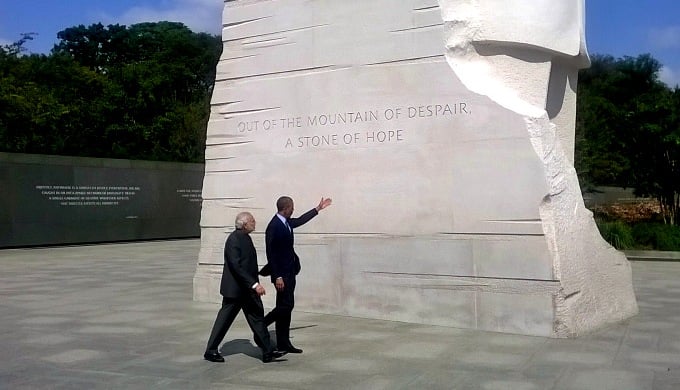As India’s new Prime Minister Narendra Modi wound up his maiden US tour with a meeting with US President Barack Obama in the White House, the US State Department provided details of a slew of agreements signed between the two governments. Tackling climate change was high on the agenda.
A State Department spokesperson said Obama and Modi “agreed to strengthen and expand the highly successful US-India Partnership to Advance Clean Energy (PACE) through a series of priority initiatives, including a new Energy Smart Cities Partnership to promote efficient urban energy infrastructure; a new programme to scale-up renewable energy integration into India’s power grid; cooperation to support India’s efforts to upgrade its alternative energy institutes and to develop new innovation centres; an expansion of the Promoting Energy Access through Clean Energy (PEACE) programme to unlock additional private sector investment and accelerate the deployment of cost-effective, super-efficient appliances; and the formation of a new Clean Energy Finance Forum to promote investment and trade in clean energy projects.”
Climate negotiations
The communique said, “Both leaders are committed to working towards a successful outcome in Paris in 2015 of the conference of the UN Framework Convention on Climate Change (UNFCCC), including the creation of a new global agreement on climate change.”
There are still major differences between the Indian and the US positions on climate negotiations, but this public backing by both leaders to success in Paris may help their negotiators narrow the differences. A few days before the Modi-Obama meeting in the White House, UN Secretary General Ban ki Moon had convened a special summit to seek exactly this kind of backing. Modi had skipped that summit, while Obama had given no indication that the US was ready to bridge the gap between the two countries.
Bridging another difference
On the contentious issue of phasing out hydrofluorocarbons (HFCs) – a greenhouse gas – India and the US stated that they “recognised the need to use the institutions and expertise of the Montreal Protocol to reduce consumption and production of HFCs, while continuing to report and account for the quantities reduced under the UNFCCC.” The two countries have disagreed over this issue earlier, and the joint statement appeared to be a compromise. India’s concerns were addressed through a joint pledge “to urgently arrange a meeting of their bilateral task force on HFCs prior to the next meeting of the Montreal Protocol to discuss issues such as safety, cost, and commercial access to new or alternative technologies to replace HFCs. The two sides would thereafter cooperate on next steps to tackle the challenge posed by HFCs to global warming.”
Finding the money
One outcome of Modi’s visit was a memorandum of understanding between the US Export-Import Bank and the Indian Renewable Energy Development Agency (IREDA), which would make up to $1 billion in financing available for US renewable energy exports to India. The plans include doubling the upcoming phase of Jawaharlal Nehru National Solar Mission (JNNSM) to 3,000 megawatts.
The two governments plan to create a bilateral Clean Energy Finance Forum through which public and private sector officials from both sides could explore specific opportunities to mobilize finance for clean energy. They also agreed to enhance cooperation and information exchange on global energy trends and mutual interests in market stability and promotion of sustainable economic growth. Since 2009, the PACE programme has already mobilised nearly $2.4 billion in public and private clean energy finance and $125 million for research on solar, biofuels, and energy efficient buildings.
Responding to one of Modi’s pet plans, the two governments have planned a new partnership on energy smart cities that will showcase the policies, technologies, and business and finance models needed to turn clean energy into a commercial opportunity – to draw in private capital and allow commercial scale-up to take off.
Another part of the agreement was called “Greening the Grid” – ensuring reliable delivery of clean energy through a stronger, more flexible power system. This will support India’s 24×7 energy access goal through activities aimed at enabling large-scale deployment of clean energy and energy efficiency.
For parts of India not reached by the electricity grid, the two countries decided to expand the initiative called Promoting Energy Access through Clean Energy (PEACE). The expansion will be in the form of private sector investment to enable a million more people gain access to modern forms of energy.
To strengthen climate resilience, the two countries will cooperate to develop actionable information, data and tools to help national, state, and local officials with climate adaptation planning. They also announced a new programme of work on air quality to expand joint efforts that deliver human health, environmental, and climate benefits.
Modi and Obama launched a new US-India Partnership for Climate Resilience to advance capacity for climate adaptation planning, and a new programme of work on air quality aimed at delivering benefits for climate change and human health. They also launched a new US-India Climate Fellowship Programme to build long-term capacity to address climate change-related issues in both countries.

